Remote Water Quality Monitoring with the Oklahoma Water Resources Board
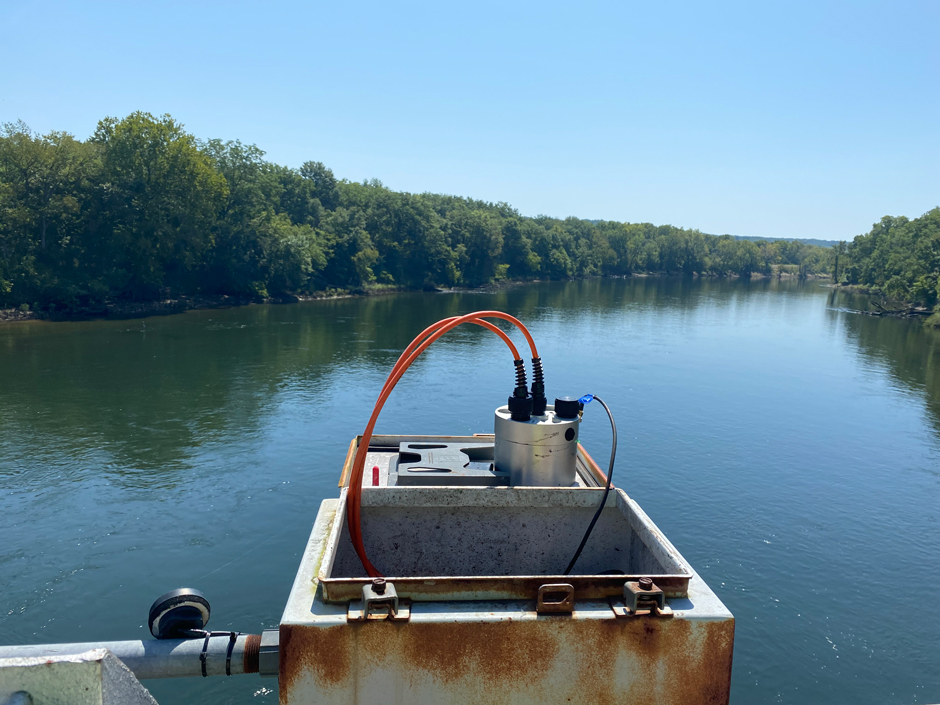 A Nexsens datalogger sits on the open lid of its metal housing attached to Langley Bridge overlooking the Neosho River downstream of Pensacola Dam. (Credit: Sarah Dexter)
A Nexsens datalogger sits on the open lid of its metal housing attached to Langley Bridge overlooking the Neosho River downstream of Pensacola Dam. (Credit: Sarah Dexter)Growing up surrounded by water, whether it be rivers or streams, lakes or ponds or right on the coast of the ocean, it can be easy to forget that clean water is a limited resource. For many, turning on the tap means potable, running water—“You’re not really thinking, ‘well this comes from a reservoir,’” explains Sarah Dexter, an Environmental Program Supervisor with the Oklahoma Water Resources Board (OWRB).
The OWRB monitors various waterbodies throughout Oklahoma, and Dexter works specifically with rivers and streams, which has placed her on several projects involving dams and stormwater monitoring. Overall, the OWRB collects large amounts of data that allows them to support various studies, trend spotting and initiatives thanks to real-time monitoring and continuous data gathering.
Dexter explains, “We have that benefit of having our data reach a wide area of citizens. That’s probably the most significant part of our work. Some of these sites, we’ve been sampling for 20 years or more. So there’s a lot of data that we have, that can be utilized in a variety of ways.”
Stormwater Monitoring in Norman, Oklahoma
Dexter is leading two major projects in Oklahoma, the first of which is a stormwater monitoring project for the city of Norman. The project began as a result of a Total Maximum Daily Load that was conducted in 2013 and resulted in the city being required to create a monitoring plan to identify the main sources of nutrient and sediment concentrations impacting water quality.
The city is also required to use the data gathered by the project to develop and put in place best management practices that lessen those pollutants from entering into the watershed. Dexter’s role in the project is to lead the monitoring efforts year-round. “During a rain event the streams carry runoff, which can contain excess sediments and nutrients from the surrounding watershed to the lake,” explains Dexter.
Dexter expands, “It’s what’s entering into the streams, because those streams are flowing into the lake. And the lake is where people recreate, and that’s where the drinking water for the city comes from. So it’s a major multi-use watershed.”
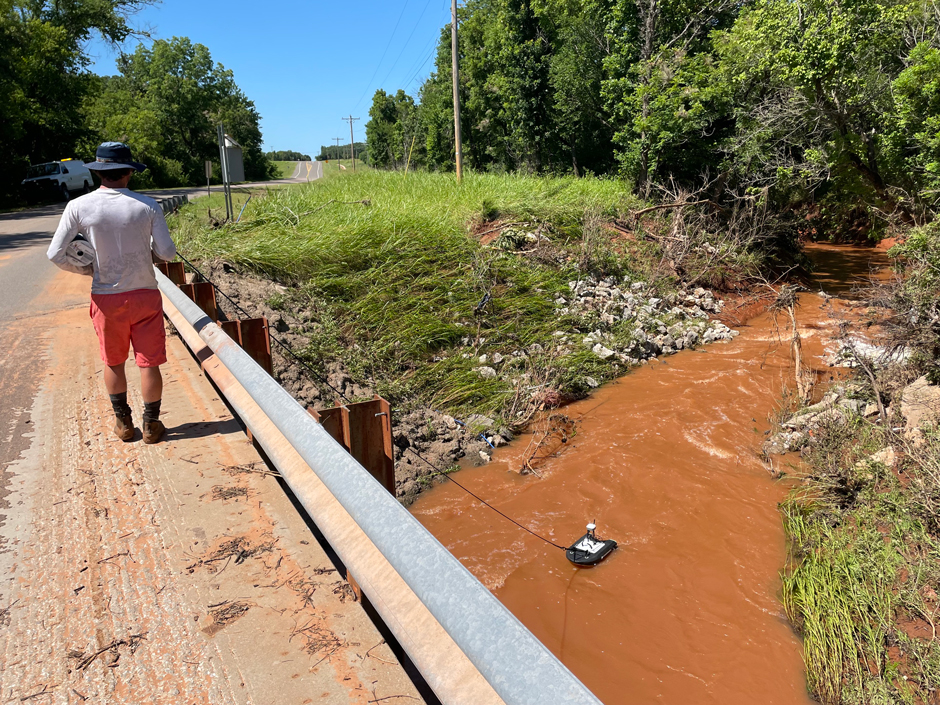
A seasonal OWRB staff member collects a stormwater discharge measurement using an ADCP at Upper Dave Blue Creek in Norman, Oklahoma. (Credit: Neal Harmon)
Dam Monitoring Downstream
Alongside the stormwater monitoring in Norman, the OWRB has been involved in the Grand River Dam Authority’s (GRDA) dissolved oxygen monitoring program since 2006. When the OWRB got involved in 2006, the division worked with the GRDA to test various release scenarios and their effectiveness on dissolved oxygen concentrations. The current strategy of monitoring water quality and preemptively mitigating dissolved oxygen declines was adopted in 2013.
Dexter serves as a contractor to the GRDA, helping to maintain equipment below the dam and collecting and correcting the data to determine whether the locations are meeting Oklahoma water quality standards.
The GRDA must meet Federal Energy Regulatory Commission (FERC) guidelines in order to stay licensed, and the CB-450s equipped with X2-CB data loggers stationed below Kerr Dam and the X2 data loggers attached to a bridge downstream of Pensacola Dam help gather data continuously to ensure the dam is meeting these requirements.
The X2 data loggers transfer the data gathered by the system to the cloud, where Dexter and the dam operators can view the data in real-time through the WQData LIVE datacenter. The team of managers and scientists involved in the program all have access to the database, including the alarms that go off and get sent out to everyone involved when dissolved oxygen levels have dropped too low.
There are two alarms designed to go off. The first is set at a dissolved oxygen concentration above water quality standards—the goal of this alarm is to notify operators and allow them to proactively mitigate levels from dropping below. The second alarm occurs when dissolved oxygen falls below the standards, notifying the OWRB, GRDA and other government agencies that additional water should be released.
The alarms allow the dam operators to respond quickly to low dissolved oxygen levels. “If they’re not meeting standards, then alarms get emailed to a whole bunch of people,” states Dexter.
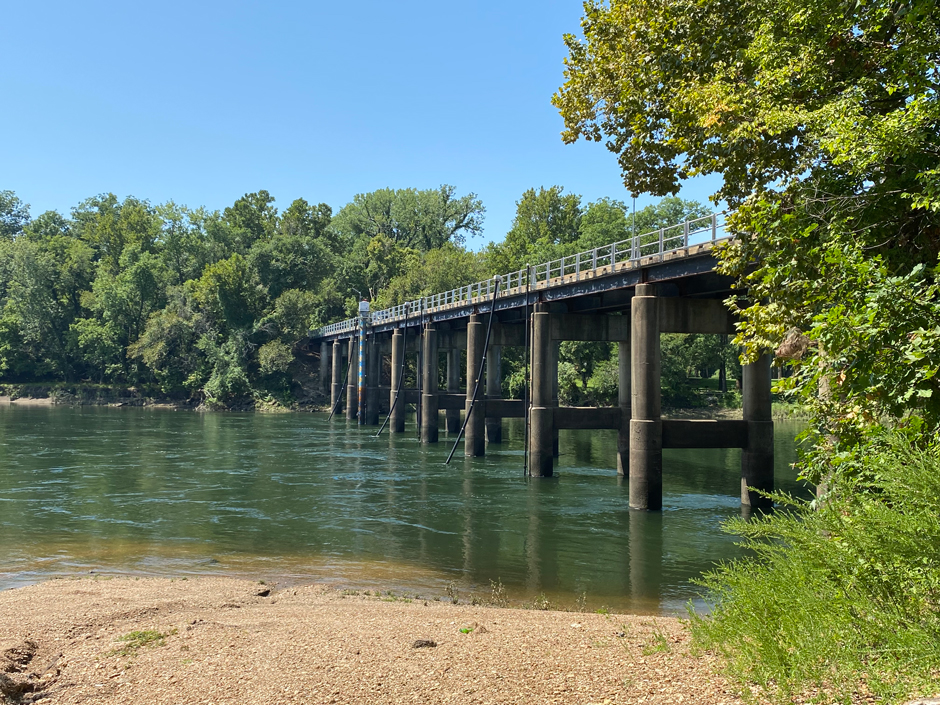
Three multiparameter sondes housed in drag tubes attached to Langley Bridge downstream of Pensacola Dam are a year-round, continuous monitoring and compliance point. (Credit: Sarah Dexter)
Local Challenges to Real-Time Monitoring
The systems located near Norman have been the target of vandalism and theft on a few accounts, with solar panels being stolen or damaged, leading to equipment dying. When equipment stops working as a result of environmental damage or vandalism, Dexter has to go through the arduous process of acquiring replacement parts to ensure minimal data loss.
Since the OWRB works across Oklahoma, having to go out and troubleshoot sensors or other pieces of equipment can be challenging due to the location. The systems sounding out alarms does make identifying the need for troubleshooting easier and saves the team a great deal of time traveling to each location in order to manually collect data.
When designing each system, Dexter had to consider data needs as well as building something that would be able to withstand a challenging environment. For the GRDA project specifically, the buoys needed to be rugged and durable in the face of flood conditions while still being able to gather data.
“We use a lot of equipment from various companies and NexSens’ equipment is really sturdy. We’ve had buoys deployed below the dam, during flood conditions, and the buoys are still there! They make it and it’s reliable,” states Dexter.
She continues, “[NexSens has] really good technical support. It’s nice to be able to call and get someone who can actually help.”
An additional two buoys are stationed in the Horse Creek arm of Grand Lake from May to October, when the system experiences lower dissolved oxygen levels. The buoys do more than simply monitor dissolved oxygen, with some being equipped to monitor algal blooms as well.
Dexter explains, “They put the NexSens buoys out there to try and see if they could catch a bloom happening before it happens. So they’re looking at all these different parameters and their relationships between pH and dissolved oxygen and the chlorophyll and blue green readings and trying to determine if they can catch something happening before it gets too bad.”
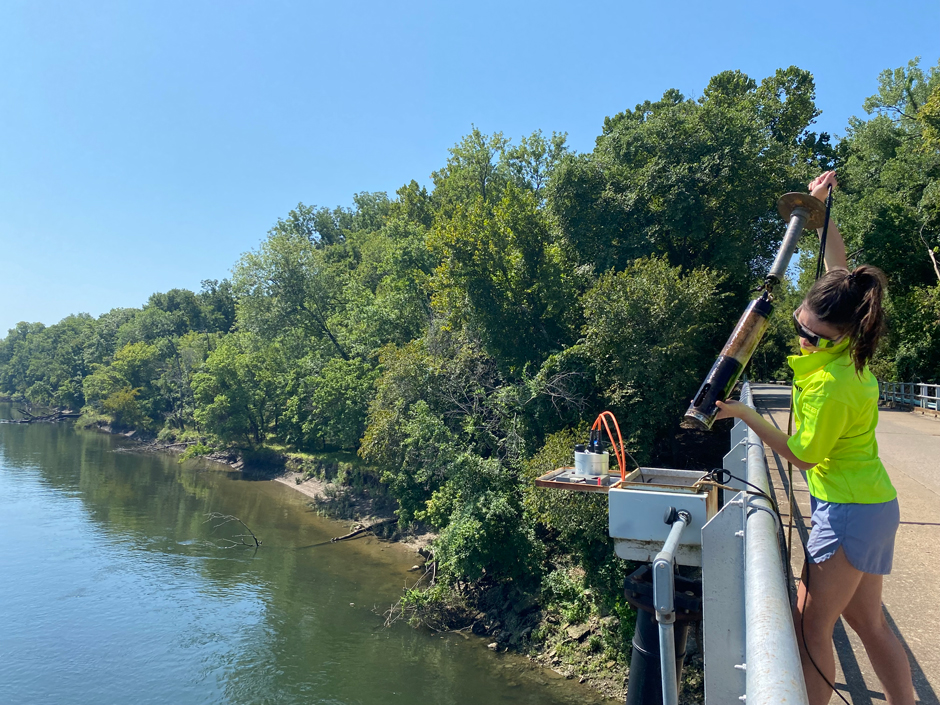
An OWRB staff member pulls a multiparameter sonde out of a drag tube attached to Langley Bridge downstream of Pensacola Dam on Grand Lake. (Credit: Sarah Dexter)
Conclusion
One of the greatest challenges for Dexter and other scientists working for the OWRB is being unable to see the impact of the data they collect. As a non-regulatory agency, Dexter explains that it can be frustrating to collect all of the data and then be unable to act on it immediately. However, being part of the solution and part of the larger initiative is rewarding.
“It’s kind of nice to be part of something where maybe there’s not always a tangible solution or sometimes you can see it, like, ‘Okay, this is the solution to this problem—this is how we fix it.’ And sometimes it’s a little frustrating, but it’s nice to be able to think that what we’re doing is part of a process for the greater good and communal use of the data,” Dexter clarifies.
“Water is integral to everything,” she states. “Being able to help improve the environment in which I’m living, my friends are living, the people of the state are living—it’s nice to think that maybe we contribute to that.”
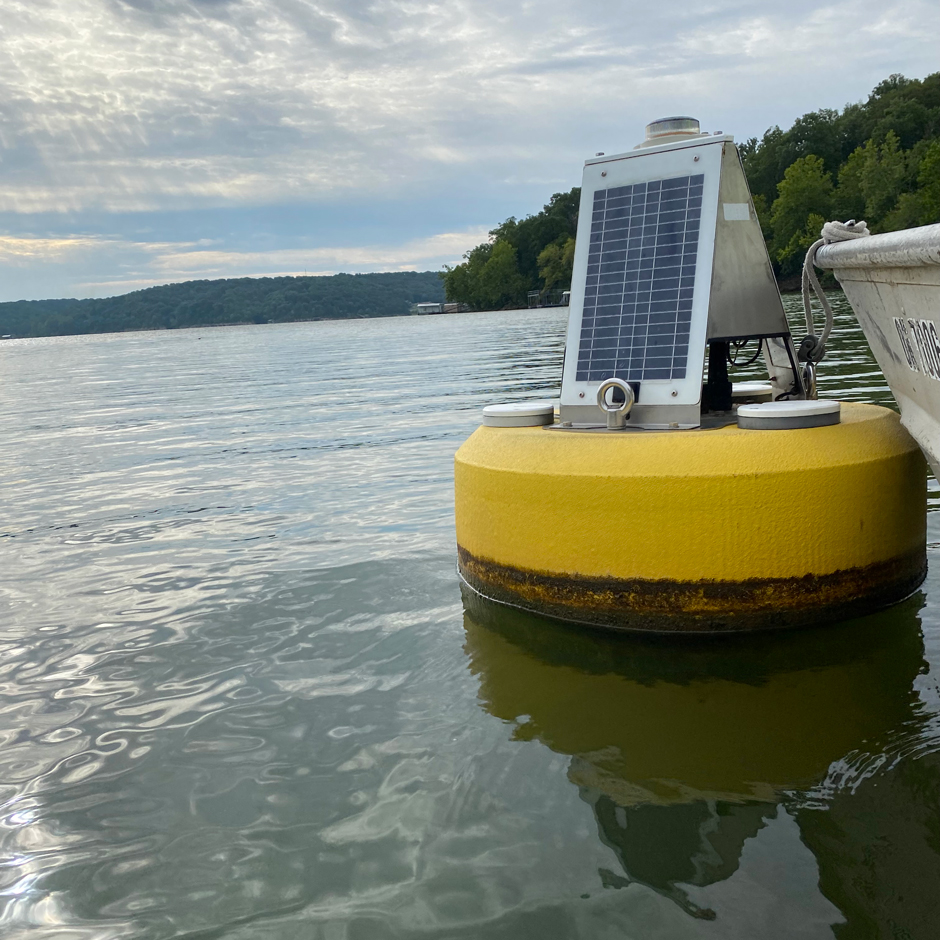
A Nexsens data buoy housing a multiparameter sonde used to help predict and identify algal blooms sits in the Fly Creek arm of Grand Lake in NE, Oklahoma. (Credit: Sarah Dexter)




0 comments